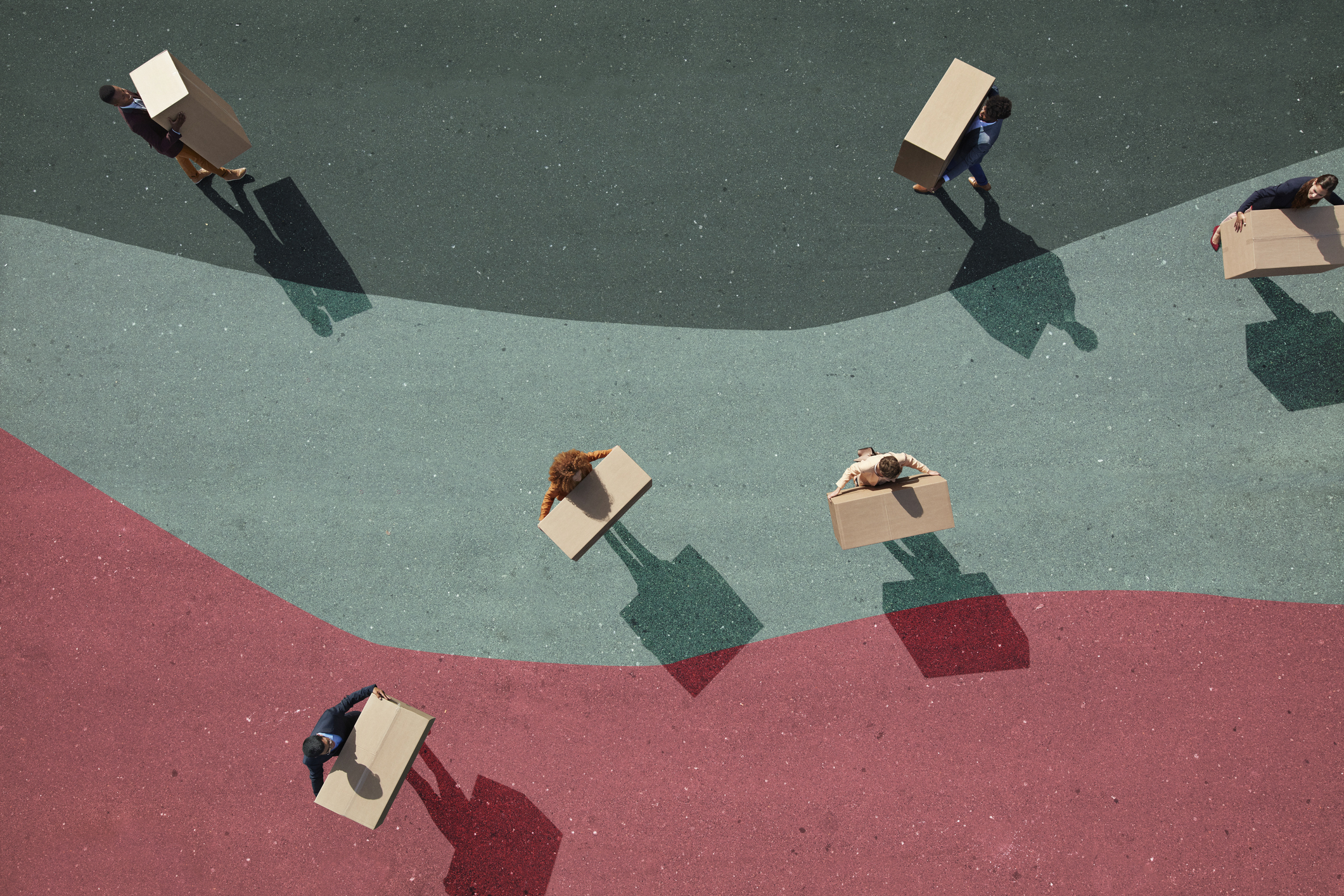U.S. Treasuries: Higher Yields Without the Risk
Why short-term Treasuries look compelling for the first time since the financial crisis.


For years, the bond market has sent one clear message to investors: To earn a decent yield, you have to take risks. But after a long stretch of painfully low interest rates, one of the least risky investments around is finally offering respectable yields.
As the Federal Reserve raises rates, short-term U.S. Treasury yields have climbed sharply. As of mid July, the two-year Treasury yields 2.6%, up from 0.7% three years ago.
That makes short-term Treasuries look compelling for the first time since the financial crisis. Investors in these bonds can now keep pace with inflation and earn a yield that’s competitive with the highest-yielding certificates of deposit. Plus, short-term Treasuries come with very little interest-rate risk (when rates rise, bond prices fall) and are backed by the U.S. government.
From just $107.88 $24.99 for Kiplinger Personal Finance
Become a smarter, better informed investor. Subscribe from just $107.88 $24.99, plus get up to 4 Special Issues

Sign up for Kiplinger’s Free Newsletters
Profit and prosper with the best of expert advice on investing, taxes, retirement, personal finance and more - straight to your e-mail.
Profit and prosper with the best of expert advice - straight to your e-mail.
Money managers are taking note. “The story of the year this year will be the front end of the yield curve moving higher and being an alternative to other investments,” says Rick Rieder, BlackRock’s chief investment officer of global fixed income. He points to five-year investment-grade bonds, which offer a yield of about 3.6%. “I’m getting virtually all of that yield just being in a front-end Treasury,” he says, and without having to worry about credit risk—the risk that the issuer will default on the debt.
That’s a drastic change from recent years, when income-seeking investors were forced to take on substantial interest-rate or credit risk—or both—to earn a healthy yield. The rise in short-term yields may also cause investors to rethink their stock exposure. The Utilities Select Sector SPDR exchange-traded fund, for example, yields 3.4%. You can get about three-fourths of that yield with less risk in a two-year Treasury.
Even if the Fed raises rates faster than expected, short-term Treasury investors are in little danger, Rieder says, because the generous yields on these bonds would cushion the blow. In longer-term Treasuries, however, “the interest-rate sensitivity is tremendous,” he says. The 30-year Treasury bond, for example, would suffer a 4% price decline if rates rise just 0.2 percentage point.
Treasuries Versus CDs
Top-yielding CDs still offer slightly more generous income than short-term Treasuries. But savers weighing short-term Treasuries against CDs should consider a few factors beyond yield. Unlike CDs, Treasuries are exempt from state and local income tax. So taxpayers in states with higher income tax rates may easily get higher after-tax yields in Treasuries.
Treasuries also offer convenience for yield hunters. If you’re trying to earn top yields in CDs, “you’re unlikely to get the best deal just sticking with one bank,” says Ken Tumin, editor of DepositAccounts.com. And Treasury investors with large balances don’t have to worry about going over the federal deposit insurance limits that apply to CDs and other bank deposits.
How short term should you keep your short-term Treasuries? The yield curve has been flattening, so the additional yield generated by investing in longer-term Treasuries is diminishing. As of mid July, a five-year Treasury yields 2.8%, and the 10- and 20-year both yield roughly 2.9%. That’s not much compensation for a lot of extra interest-rate risk. So a two-year yield of 2.6% “seems to be the sweet spot,” Tumin says.
Brokerage firms such as Fidelity and Schwab charge no commission for online purchases of Treasuries. Or you can buy directly from the federal government in increments of $100 at treasurydirect.gov.
Plan to hold your Treasuries to maturity. If you want to sell early, you’ll have to first transfer your Treasuries to a bank or broker.
Treasury bills (which have maturities up to one year) pay interest only at maturity, and Treasury notes (with maturities of two to 10 years) pay interest semiannually, so retirees seeking monthly income may want to stagger their purchases.
Profit and prosper with the best of Kiplinger's advice on investing, taxes, retirement, personal finance and much more. Delivered daily. Enter your email in the box and click Sign Me Up.

-
 Guide to How All-Assets Planning Offers a Better Retirement
Guide to How All-Assets Planning Offers a Better RetirementAn "all-asset" strategy would integrate housing wealth and annuities with traditional investments to generate more income and liquid savings for retirees.
-
 Forget FIRE: Why ‘FILE’ Is the Smarter Move for Child-Free DINKs
Forget FIRE: Why ‘FILE’ Is the Smarter Move for Child-Free DINKsHow shifting from "Retiring Early" to "Living Early" allows child-free adults to enjoy their wealth while they’re still young enough to use it.
-
 7 Tax Blunders to Avoid in Your First Year of Retirement
7 Tax Blunders to Avoid in Your First Year of RetirementA business-as-usual approach to taxes in the first year of retirement can lead to silly trip-ups that erode your nest egg. Here are seven common goofs to avoid.
-
 9 Types of Insurance You Probably Don't Need
9 Types of Insurance You Probably Don't NeedFinancial Planning If you're paying for these types of insurance, you may be wasting your money. Here's what you need to know.
-
 The November CPI Report Is Out. Here's What It Means for Rising Prices
The November CPI Report Is Out. Here's What It Means for Rising PricesThe November CPI report came in lighter than expected, but the delayed data give an incomplete picture of inflation, say economists.
-
 The Delayed November Jobs Report Is Out. Here's What It Means for the Fed and Rate Cuts
The Delayed November Jobs Report Is Out. Here's What It Means for the Fed and Rate CutsThe November jobs report came in higher than expected, although it still shows plenty of signs of weakness in the labor market.
-
 December Fed Meeting: Updates and Commentary
December Fed Meeting: Updates and CommentaryThe December Fed meeting is one of the last key economic events of 2025, with Wall Street closely watching what Chair Powell & Co. will do about interest rates.
-
 The Delayed September Jobs Report Is Out. Here's What It Means for the Fed
The Delayed September Jobs Report Is Out. Here's What It Means for the FedThe September jobs report came in much higher than expected, lowering expectations for a December rate cut.
-
 October Fed Meeting: Updates and Commentary
October Fed Meeting: Updates and CommentaryThe October Fed meeting is a key economic event, with Wall Street turned into what Fed Chair Powell & Co. did about interest rates.
-
 The Delayed September CPI Report is Out. Here's What it Signals for the Fed.
The Delayed September CPI Report is Out. Here's What it Signals for the Fed.The September CPI report showed that inflation remains tame – and all but confirms another rate cut from the Fed.
-
 Banks Are Sounding the Alarm About Stablecoins
Banks Are Sounding the Alarm About StablecoinsThe Kiplinger Letter The banking industry says stablecoins could have a negative impact on lending.